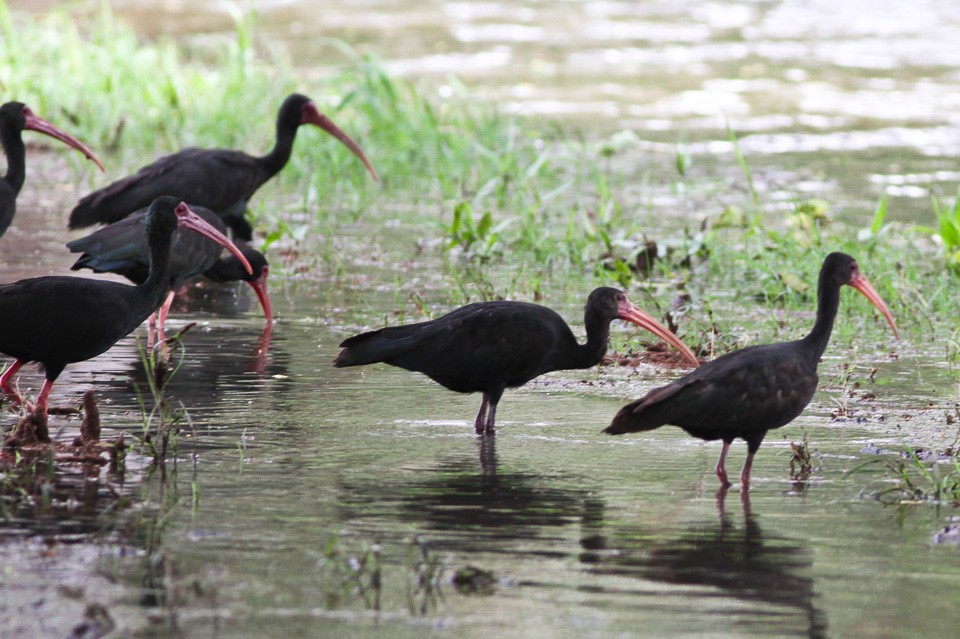Bare-faced Ibis
A species of Bare-faced Ibis Scientific name : Phimosus infuscatus Genus : Bare-faced Ibis
Bare-faced Ibis, A species of Bare-faced Ibis
Botanical name: Phimosus infuscatus
Genus: Bare-faced Ibis
Content
Description General Info
Description
The Bare-faced ibis is either dark brown or a blackish color. It is called the bare-faced ibis because it does not have any feathers on its face. It has a long Decurved bill that's pinkish to reddish brown. The skin on its face is usually a reddish color and it also has long orangely colored beak with pink legs. The total length of the ibis ranges between 45 and 50 cm. 
Size
54 cm
Colors
Brown
Black
Green
Gray
Blue
Life Expectancy
20 years
Nest Placement
Ground
Feeding Habits
Bare-faced Ibis primarily consumes invertebrates, such as insects, worms, and freshwater clams. Its feeding behaviors involve foraging in wetlands, often probing mud or shallow water. Uniquely adapted to these environments, bare-faced Ibis displays preference for a varied diet that supports its habitat.
Habitat
Bare-faced Ibis is typically found in a variety of open and wetland habitats, including wet meadows, pastures, savannas, marshes, rice fields, and the margins of lagoons, pools, and rivers. These habitats are often near sea level but bare-faced Ibis can also be found at elevations up to 2600 meters. Bare-faced Ibis adapts to human-altered landscapes, as seen in its presence in urban areas along canals and ditches. It appears to thrive in regions where native vegetation has been replaced by human agriculture, such as cattle grasslands or rice cultivation.
Dite type
Omnivorous
General Info
Feeding Habits
Bird food type
Behavior
The Bare-Faced ibis are usually seen in large flocks of their own species or with other species of ibis, sometimes even found with domestic animals. They live in close range neighboring amongst other flocks of ibis, typically known for the closest living habitats that range from being 100 meters away from the nearest neighbor. They are not very territorial towards other ibis birds, and rarely found alone, but most of the time the aggression is shown from food robbery from another ibis or animal. Regarding sexual behavior, the Bare-Faced ibis is less aggressive amongst other species of ibis. The males have a larger bill than the females relative to their body sizes, and sexual selection is not as intense as it is in other species. They share nests with other species as well. 
Species Status
Not globally threatened.
Scientific Classification
Phylum
Chordates Class
Birds Order
Pelicans and Relatives Family
Ibises and spoonbills Genus
Bare-faced Ibis Species
Bare-faced Ibis 